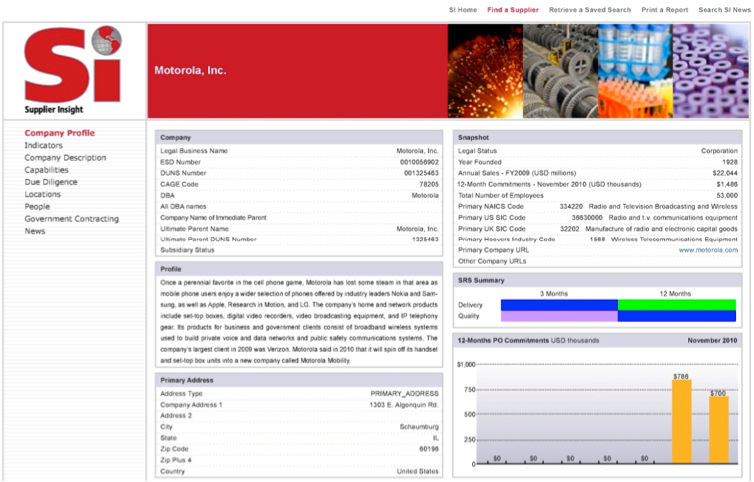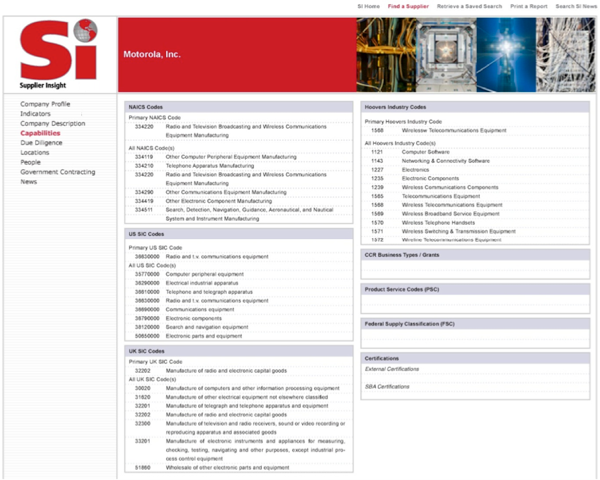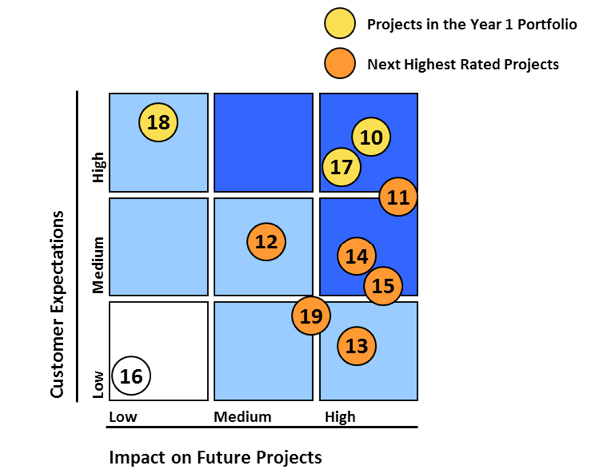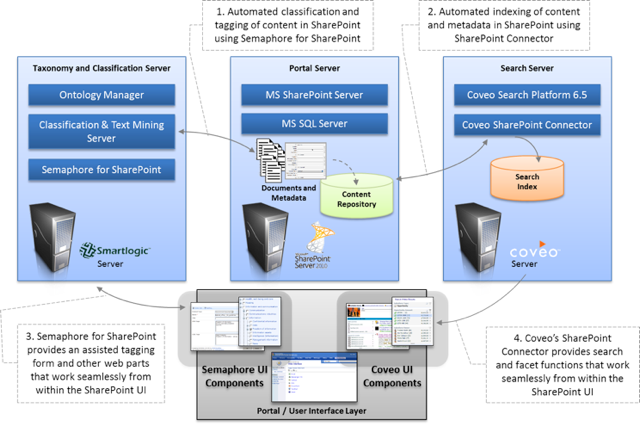A major American defense contractor and industrial corporation was having difficulty responding to supply chain disruptions. With tens of thousands of suppliers located around the world, a significant event at any one of their suppliers’ manufacturing facilities, such as a strike, a major electrical outage, or an earthquake, could have a negative impact on the delivery of a major radar project or missile system.
Approach
The project consisted of the following six major work activities:
- Content Source Analysis. Iknow worked with company’s Supply Chain Subject Matter Experts (SMEs) to identify the specific types of information that should be collected and displayed, and the specific sources of that information. Iknow synthesized the information and created a data element-data source map. Iknow evaluated alternate sources and prepared recommendations on the specific external sources of information that should be acquired for the SI Platform.
Iknow developed standard data element-naming conventions and definitions to assist in aggregating data from multiple sources. Iknow also created business logic for resolving conflicting data.
- Supplier Master Index (Key) and the Data Workflow and Processing Algorithms. Iknow developed a master key/indexing strategy for uniquely identifying each potential supplier. We created a relational database that integrated the company’s internal supplier naming conventions, D&B® D-U-N-S® Numbers, official company names, North American Industry Classification System (NAICS) industry codes, and the names of product categories and commodity types. Iknow then designed the end-to-end process workflow for data acquisition, cleansing, matching, and disambiguation.
Note: This work stream was very important because each new piece of incoming data needed to be matched correctly to a unique company. While D-U-N-S Numbers are used to uniquely identify more than 100 million businesses worldwide, we estimated that up to 30 percent of the potential suppliers in the company’s SI database that are located outside the United States did not have a D-U-N-S Number. Additionally, NAICS codes are likely only available for companies operating in North America. Therefore, creating and updating a supplier master index and the supporting logic algorithms to resolve matches of companies with similar names was fundamental to the overall integrity of the system.
- Intelligent Search (IS) Broker Creation. Iknow created the custom software code for acquiring the supplier data from the external sources. Iknow used the SAP BusinessObjects Intelligent Search product and built custom software brokers to access the specific websites and databases.
- Text Analysis Rule Creation. Iknow developed a set of custom rules for the SAP BusinessObjects Text Analysis product. The custom rules are used to finely tune the natural language processing (NLP) algorithms so that only the desired entities, or data elements, are extracted and stored during the processing of incoming, unstructured text content.
- User Experience Design and Development. Iknow developed high quality, user-friendly interfaces for the Supplier Intelligence application. The interfaces were web-based, multipage displays that contained advanced functionality for searching and displaying structured and unstructured data. Iknow designed the search, advanced search, faceted navigation of search results, and other search-related functionality. Iknow developed several display dashboards that present supply chain-related data in pie charts, bar charts, time-series plots, maps, and other display formats.
- Business Logic and Technical Architectures. Iknow designed, developed, and tested the new Supplier Intelligence Platform following the company’s DoD-certified software development methodology. The Platform was implemented using a services oriented architecture (SOA). Core technical functionality and business logic included scheduling the raw data acquisition, performing data quality and data reconciliation activities, and loading the data into structured databases. Iknow also designed and developed an overall user experience that fosters interaction with an exploration of the data and provides the mechanisms for collecting human intelligence and other forms of feedback.
The Supplier Intelligence platform was implemented using the following software tools from SAP:
- SAP BusinessObjects Intelligent Search Language Processing
- SAP Business Objects Text Analysis (language: English)
- Text Analysis Language Processing (all other languages)
- SAP BusinessObjects DQM
- SAP BusinessObjects BI Package
- SAP Business Suite Business Expert Upgrade User
- SAP NetWeaver Enterprise Search
- SAP Portal
Other commercial, off-the-shelf (COTS) software products included Oracle databases and SAP ERP systems. The production system is hosted in the company’s secure data centers. The Platform and the supporting databases are accessible behind the company’s firewall.
* * *
Some of the project’s major deliverables included:
- Software installation in development, testing, and production environments
- Business requirements document
- Functional requirements document
- UI design and implementation
- Database design and implementation
- Custom Intelligent Search brokers for each of the content source websites
- Custom rules for Text Analysis entity extraction
- Database application for managing the supplier websites
- QA and UA testing
- Training (end user training; technical training)
- Periodic status reports
The exhibit below shows a screen shot of the top of a Company Profile page. It contains general company data, a vendor profile, the primary address, and 12-month purchase order commitments.
Screenshot of a Supplier Profile Page (Top)

The second exhibit shows additional information presented further down on the Company Profile page. This screen shot includes primary competitors and a complete list of human intelligence about the specific vendor.
Screenshot of a Supplier Profile Page (Bottom)

The third exhibit shows NAICS Codes, US and UK SIC Codes, and Hoovers Industry Codes for the vendor.
Screenshot of a Supplier Capabilities Page

Results
This major defense contractor received a supplier intelligence system that provides real-time news and information about every company in its global supplier database, as well as news and information on any potential supplier. Any type of information, from an earnings release, a change in senior management, or an unexpected weather event, is presented to the appropriate internal analyst for review. This new capability is considered to be an indispensable element in mitigating supply chain risk.
Information about suppliers is obtained from many external content sources, including:
- Amadeus
- Bloomberg
- Corp Tech
- Data Monitor
- Defense and Aerospace Competitive Intelligence Service (DACIS)
- Directory of Corporate Affiliations
- Dow Jones Factiva
- Dun & Bradstreet International (DNBi)
- Epicos
- Google
- Government Contracts Won
- Hoovers
- Janes
- LinkedIn
- Mergent Online
- Panjiva
- System for Award Management (SAM)





